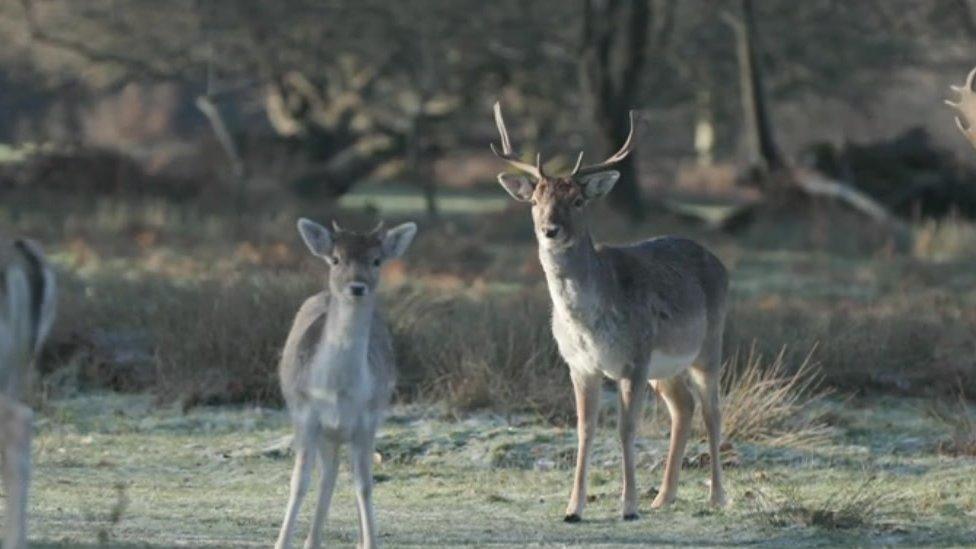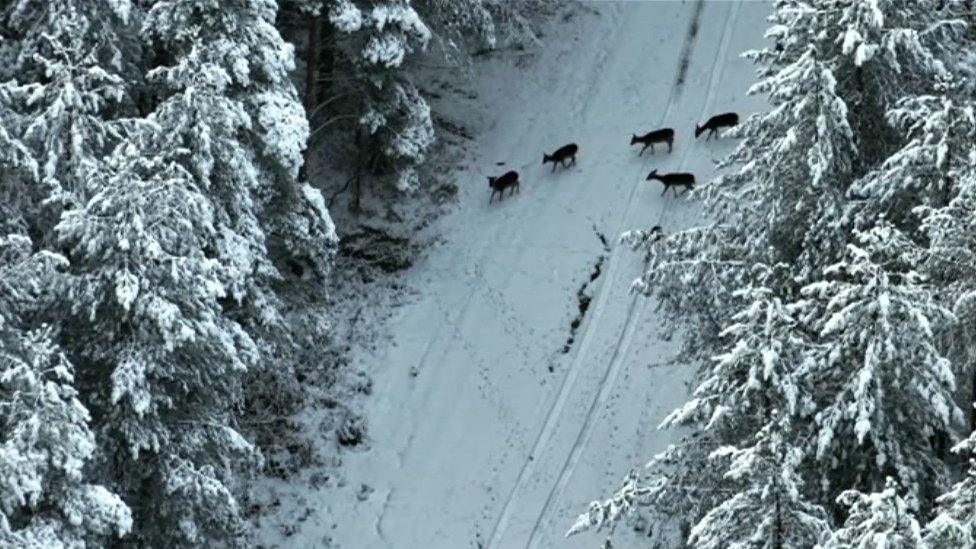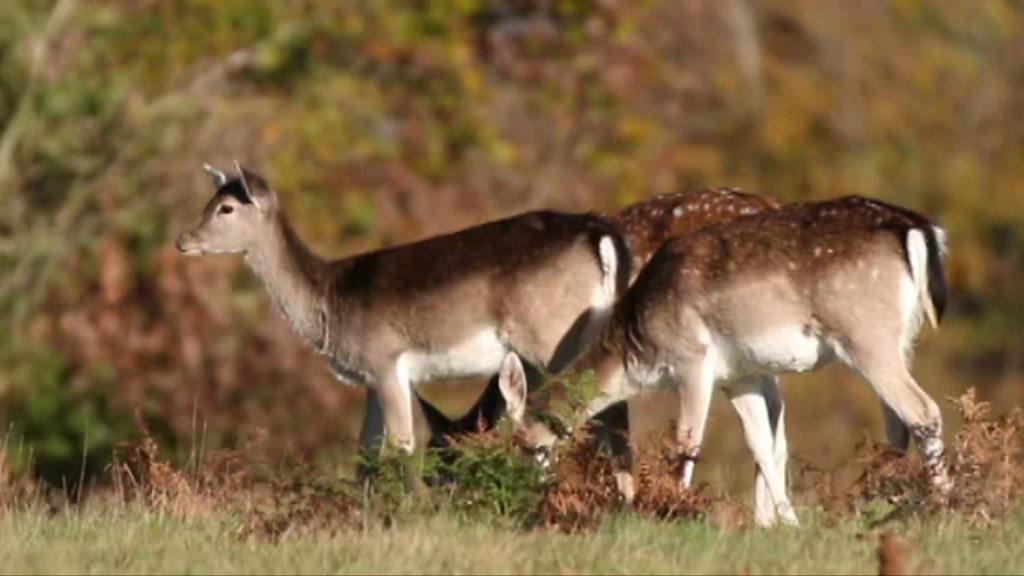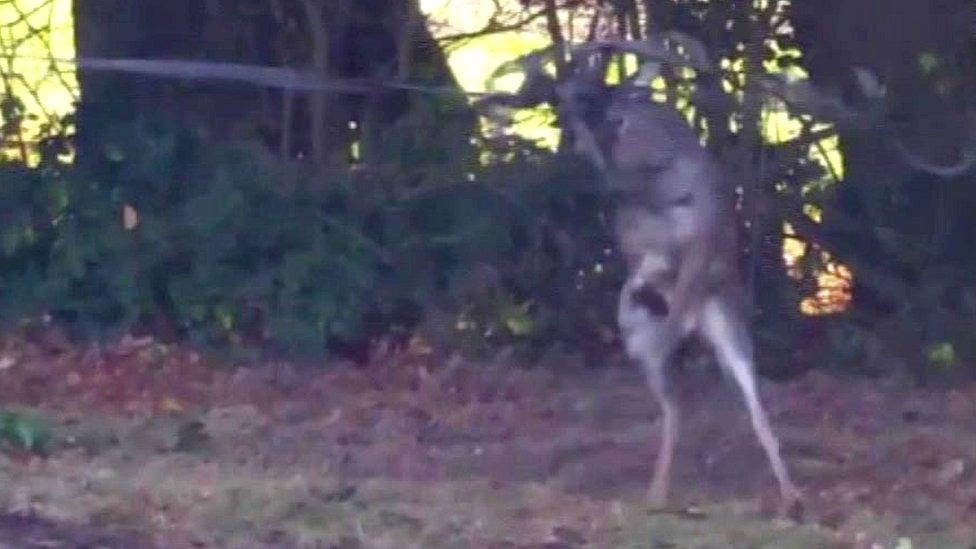Ashdown Forest: Ecologists deploy drones to monitor deer population
- Published

Wildlife experts are using drones to count the deer population of Ashdown Forest
Wildlife experts are using drones to count the deer population of the Ashdown Forest.
The information will be used to help manage the numbers of fallow deer, a non-native species that can "completely change the biodiversity" of an area if left unchecked.
Ten years ago the population grew so high that deer were involved in hundreds of road accidents.
Since 2016 deer numbers have been controlled through culling.
It has led to a gradual reduction in collisions with deer as well as an improvement in habitat, local wildlife experts say.
Ashdown Forest deer officer Glen Poland said: "They're a herd species so we do tend to see a lot more of them from numbers ranging from 20 to even 100 deer in one herd."
"You can imagine them going through a woodblock, not being pressured in staying there. They're just going to completely change the biodiversity."

Ecologists are counting deer in Ashdown Forest in order to manage their numbers
Ecologists use drones with cameras and a thermal imaging sensor to observe the forest from above.
The images are then put onto a mapping system, creating a detailed picture of the population of deer in the East Sussex woodland.
Wildlife consultant Ben Harrower said: "We record the species, the age class - if we can tell from the imagery - and the sex of the deer. Then it creates this distribution and density map of the deer across the forest."

Follow BBC South East on Facebook, external, on Twitter, external, and on Instagram, external. Send your story ideas to southeasttoday@bbc.co.uk, external.
- Published9 February 2018

- Published3 November 2016

- Published21 March 2011